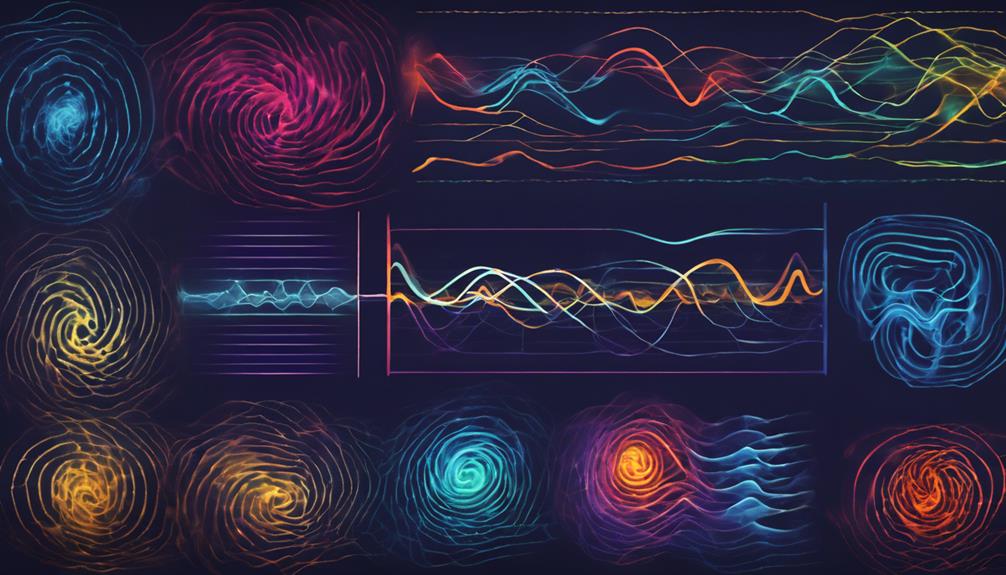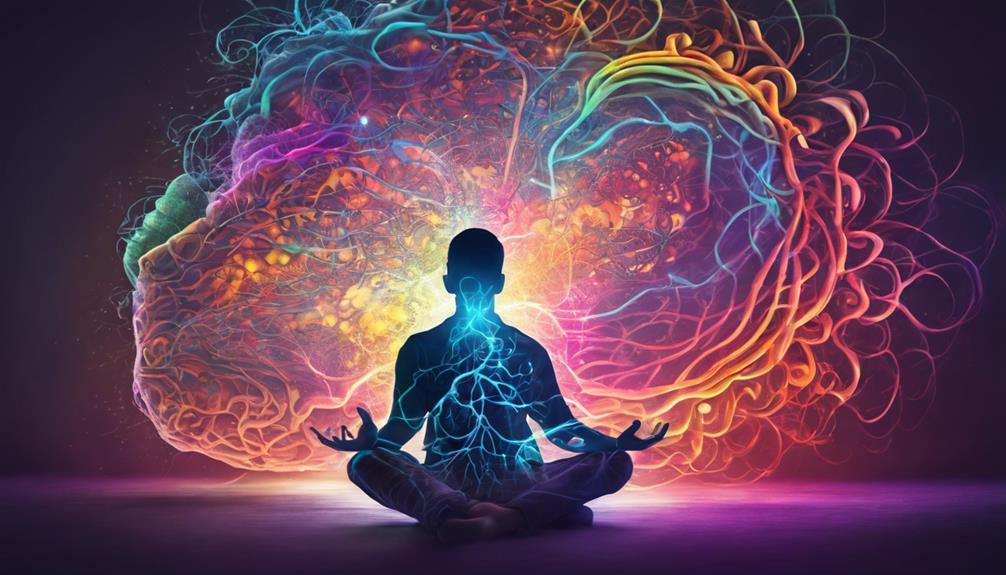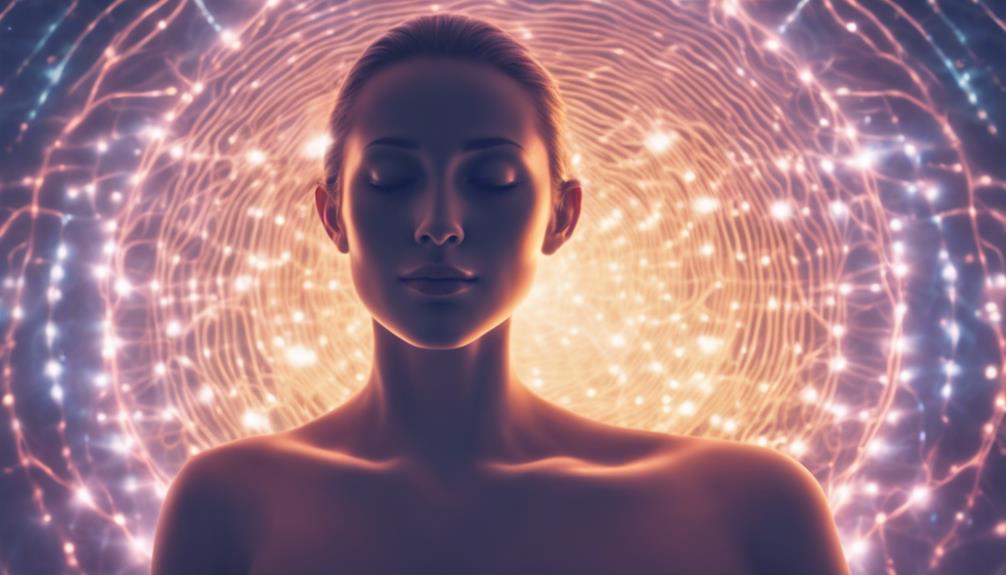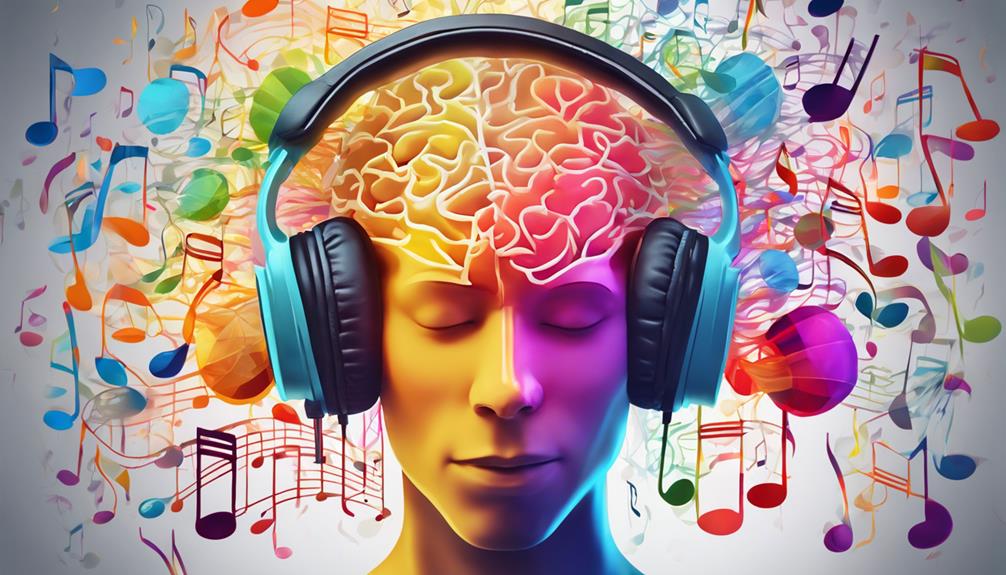Enhancing brain activity during hypnosis involves utilizing brainwave patterns, altered neural networks, deep breathing, visualization, positive affirmations, mindfulness practices, guided imagery, and music therapy. Techniques such as deep breathing stimulate the parasympathetic nervous system, while visualization enhances cognitive processes and brain function. Positive affirmations influence brain activity, and mindfulness practices deepen the trance state. Likewise, guided imagery techniques can enhance the depth and effectiveness of hypnosis sessions. Lastly, music therapy modulates emotional responses to promote calmness and reduce distractions. These strategies collectively optimize brain activity during the hypnotic state for improved cognitive performance and emotional regulation.
Understanding Brain Waves in Hypnosis

During hypnosis, the brain experiences distinct changes in its electrical activity, known as brain waves, which play a crucial role in the hypnotic state. Neuroscience research has delved into the brainwave patterns observed during hypnotic states, shedding light on the cognitive processes and altered states experienced during hypnosis.
Studies have shown that hypnosis induces a shift in brainwave patterns, particularly an increase in theta waves. Theta waves are associated with deep relaxation, meditation, and heightened creativity. This alteration in brain activity suggests a state of focused attention and heightened suggestibility, which are fundamental aspects of the hypnotic experience.
Neuroscientific investigations have also revealed changes in the connectivity between brain regions during hypnosis. These alterations in neural networks contribute to the enhanced receptivity to suggestions and the deep immersion in the hypnotic state.
Understanding the intricate interplay of brainwave patterns and cognitive processes during hypnosis provides valuable insights into the mechanisms underlying altered states of consciousness.
Importance of Deep Breathing Techniques
Research has demonstrated the significant impact of incorporating deep breathing techniques on enhancing cognitive processes and overall brain function. Deep breathing is a fundamental component of various meditation practices and relaxation techniques.
When individuals engage in deep breathing exercises, they stimulate the parasympathetic nervous system, leading to a state of relaxation and reduced stress levels. This, in turn, can have a positive effect on cognitive functions such as attention, memory, and information processing.
Meditation benefits associated with deep breathing include improved focus, emotional regulation, and increased mindfulness. By practicing deep breathing regularly, individuals can enhance their ability to enter a calm and focused state, which is conducive to optimal brain function.
Furthermore, deep breathing techniques are known to promote better oxygen flow to the brain, supporting neural activity and cognitive performance.
Incorporating deep breathing into daily routines can serve as a powerful tool for improving overall brain activity during a hypnotic state and beyond.
Visualization for Enhanced Brain Function

Utilizing visualization techniques has been shown to significantly enhance brain function and cognitive processes. Creative visualization involves actively imagining specific scenarios or outcomes with great detail and clarity. When individuals engage in creative visualization, they stimulate various regions of the brain associated with sensory perception, memory, and cognitive processing.
This mental imagery practice can lead to improved focus, enhanced problem-solving skills, and increased creativity.
Studies have demonstrated that incorporating creative visualization into daily routines can result in cognitive enhancement, including improved memory retention, faster learning abilities, and enhanced decision-making skills. By visualizing desired outcomes or envisioning the successful completion of tasks, individuals can effectively prime their brains for optimal performance.
Moreover, creative visualization can help individuals manage stress and anxiety by promoting a positive mindset and enhancing emotional regulation. By harnessing the power of mental imagery, individuals can cultivate a more resilient and adaptable brain, capable of navigating challenges with greater ease and efficacy.
Power of Positive Affirmations
The efficacy of positive affirmations in influencing brain activity and cognitive processes has been widely studied and recognized in psychological literature. Positive affirmations are powerful tools that can aid in cognitive restructuring by challenging negative thoughts and beliefs, promoting self-confidence, and fostering a more optimistic outlook.
When integrated into self-hypnosis techniques, positive affirmations can enhance the effectiveness of the hypnotic state by reinforcing desired behaviors and attitudes.
Cognitive restructuring involves identifying and challenging negative thought patterns to replace them with more positive and adaptive ones. Positive affirmations play a crucial role in this process by helping individuals reframe their perspectives and cultivate a mindset geared towards success and well-being.
When utilized in conjunction with self-hypnosis techniques, individuals can deepen their hypnotic state and amplify the impact of these affirmations on their subconscious mind.
Incorporating Mindfulness Practices

Building upon the foundation of positive affirmations and self-hypnosis, the integration of mindfulness practices can further enhance cognitive processes and brain activity during the hypnotic state.
Mindful meditation, a key component of mindfulness practices, involves focusing the mind on the present moment without judgment. Incorporating mindful meditation techniques during hypnosis can help individuals deepen their trance state and increase receptivity to hypnotic suggestions.
By cultivating awareness and concentration through focus training, individuals can improve their ability to sustain attention during hypnosis, leading to enhanced cognitive functioning and neural activation. Mindful meditation can also promote relaxation, reduce stress, and increase emotional regulation, creating an optimal environment for hypnosis to induce positive changes in behavior and thought patterns.
Moreover, the practice of mindfulness can strengthen neural pathways associated with attention and self-regulation, facilitating a more profound hypnotic experience and promoting long-lasting benefits beyond the hypnotic session.
Role of Guided Imagery in Hypnotic State
Incorporating guided imagery techniques can significantly enhance the depth and effectiveness of the hypnotic state by engaging the power of visualization to stimulate cognitive processes and neural activity. Imagery techniques involve creating detailed mental images to evoke specific sensations, emotions, or experiences. When utilized during hypnosis, these techniques can help individuals deepen their trance state, enhance suggestibility, and promote therapeutic outcomes.
Guided imagery relies on mental focus to direct the individual's attention towards a specific image or scenario. By concentrating on these mental images, individuals can immerse themselves in a sensory-rich environment created by their mind. This intense focus can amplify the individual's responsiveness to hypnotic suggestions, making the therapeutic process more impactful.
Furthermore, guided imagery can activate various brain regions associated with perception and memory, fostering heightened neural activity during the hypnotic state. This increased neural engagement can facilitate profound changes in thought patterns, behaviors, and emotional responses, offering a powerful tool for personal growth and self-improvement during hypnotherapy sessions.
Music Therapy for Brain Stimulation

Utilizing music therapy techniques can effectively enhance brain activity and cognitive function during hypnotic states. Music has been shown to induce a relaxation response, reducing stress and anxiety levels, which are often barriers to optimal cognitive performance.
The rhythmic patterns and melodic structures in music can synchronize with brainwave frequencies, promoting neural coherence and enhancing cognitive processing.
Research suggests that listening to specific types of music during hypnosis can stimulate various brain regions associated with memory, attention, and creativity. This stimulation can lead to improved cognitive performance, including enhanced problem-solving skills, increased focus, and heightened creativity during hypnotic states.
Moreover, music therapy in hypnosis can modulate emotional responses, promoting a sense of calmness and well-being. This emotional regulation can further optimize cognitive function by reducing distractions and improving overall cognitive performance.
Frequently Asked Questions
Can Hypnotic Brain Activity Improve Memory Retention?
Hypnotic brain activity has the potential to enhance cognitive performance and improve memory retention. Research suggests that engaging in hypnosis can stimulate the brain, leading to increased focus, learning enhancement, and potentially improved memory consolidation.
Is There a Maximum Duration for a Hypnotic Session?
The optimal session length for a hypnotic session varies based on individual factors and the goals of the session. Safety concerns dictate that sessions should not exceed a duration that could lead to mental or physical fatigue.
How Long Does It Take to See Results From Hypnosis?
The effectiveness of hypnosis varies. Results' timeline hinges on individual factors like suggestibility, issue complexity, and session frequency. Patience is vital as benefits may manifest gradually over multiple sessions, with noticeable changes potentially seen after a few sessions.
Can Hypnosis Help With Anxiety and Stress Relief?
Hypnosis is a recognized method for anxiety and stress relief. Through hypnosis for phobias and hypnotic relaxation techniques, individuals can experience significant reductions in anxiety levels, leading to improved mental well-being and overall quality of life.
Are There Any Potential Side Effects of Brain Stimulation Through Hypnosis?
Potential risks associated with brain stimulation through hypnosis include false memories, heightened suggestibility, and exacerbation of existing mental health conditions. Ethical concerns arise from the manipulation of thoughts and the potential for unintended psychological effects.
Conclusion
In conclusion, enhancing brain activity during the hypnotic state can be achieved through various techniques such as:
- Deep breathing
- Visualization
- Positive affirmations
- Mindfulness practices
- Guided imagery
- Music therapy
These methods can help individuals reach a deeper state of relaxation and focus, leading to increased brain function and cognitive processing.
By incorporating these strategies into hypnotic sessions, individuals can optimize their brain activity and improve overall mental well-being.


